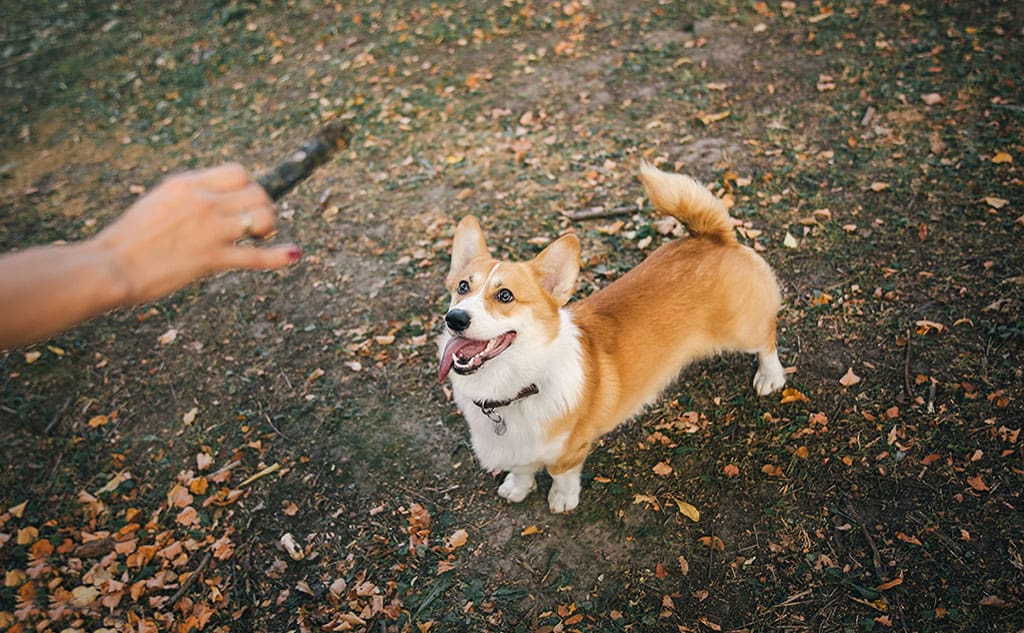
Understanding Your Dog’s Tail Language
If you’re a pet owner, you’ve probably noticed that your furry friend wags their tail a lot. In fact, it’s one of the most distinctive and recognizable behaviors that canines exhibit. But have you ever wondered why they wag their tails, and what it can tell you about their mood and emotions? In this article, we’ll explore the science behind your dog’s wagging tail, and what you can learn from it.
First of all, it’s important to note that not all tail wags are created equal. Canines can wag their tails at different speeds and in different directions, and each type of wagging can signify something different. For example, a slow wag with a low tail might indicate that your dog is feeling anxious or uncertain, while a fast, broad wag with a high tail might mean that they’re excited and happy.
But why do canines wag their tails in the first place? The answer lies in their evolutionary history. Dogs are social animals that rely on communication to interact with members of their pack. In the wild, they use body language to convey messages such as “I’m friendly,” “I’m dominant,” or “I’m scared.” Tail wagging is just one part of this complex system of communication.
Interpreting Your Dog’s Body Language
One theory is that dogs wag their tails as a way of spreading their scent around. Canines have scent glands on their tails, and when they wag, they release pheromones that contain information about their identity, sex, and emotional state. This can be a way of marking their territory or signaling their presence to other canines.
Another theory is that tail wagging is simply a way for canines to express their emotions. Just as humans might smile when they’re happy or frown when they’re sad, dogs might wag their tails when they’re feeling certain emotions. For example, they might wag their tail when they see their owner come home from work, indicating that they’re happy and excited to see them.
Interestingly, recent research has shown that not only do canines wag their tails in response to their own emotions, but they can also pick up on the emotions of other dogs through their tail wags. A study conducted at the University of Trento in Italy found that canines could differentiate between tail wags that indicated positive or negative emotions in other canines. This suggests that tail wagging is an important part of social communication among dogs.
Strengthening Your Bond with Your Furry Friend
So what can you learn from your furry friend’s wagging tail? The answer is, quite a bit! By paying attention to the speed, direction, and height of their tail, you can get clues about their emotional state. For example, a high tail wag might indicate that they’re feeling confident and dominant, while a low tail wag might mean that they’re feeling submissive or nervous.
It’s also worth noting that different breeds of canines might wag their tails differently. Some breeds have naturally high-set tails, while others have tails that hang low. This can affect the way their tail wags are perceived, so it’s important to take their breed into account when interpreting their body language.
Of course, tail wagging is just one part of a complex system of communication that canines use to interact with humans and other animals. To really understand their mood and emotions, you’ll need to pay attention to their body language as a whole. This might include their posture, facial expressions, and vocalizations.
Additionally, research has shown that humans can also pick up on cues from a canine’s wagging tail. A study conducted at the University of Helsinki found that participants were able to identify whether a dog was feeling happy, sad, or anxious based on the direction of their tail wag. This suggests that humans have evolved to understand canine communication, even if they aren’t consciously aware of it.
One important thing to keep in mind when interpreting your furry friend’s tail wags is that context matters. Canines don’t just wag their tails in isolation – they do so in response to their environment and the people or animals around them. For example, a dog might wag their tail in excitement when they see their owner, but if they’re also barking and jumping, it might indicate that they’re feeling overstimulated or even aggressive.
Calming treats by Kinpur Pet care are a natural and effective way to help dogs control their behavior. These chews are formulated with a blend of natural ingredients such as chamomile, passionflower, and valerian root that are known for their calming and soothing properties. When given to a dog, these chews can help reduce anxiety and stress, promote relaxation, and improve overall behavior. They are especially helpful during stressful situations such as thunderstorms, car rides, or visits to the vet. Unlike prescription medications, calming chews do not have any negative side effects and are safe for long-term use. With Calming chews by Kinpur Pet care, pet owners can enjoy a happy and stress-free relationship with their furry friends.
In conclusion, the wagging tail of your furry friend is much more than just a cute and fluffy part of their body – it’s a complex and important form of communication. By paying attention to the speed, direction, and height of their tail wags, as well as their overall body language and vocalizations, you can get a better sense of their mood and emotions. And remember, communication is a two-way street – by being mindful of your own body language and vocalizations, you can strengthen your bond with your furry friend and ensure that you’re communicating effectively with each other.


